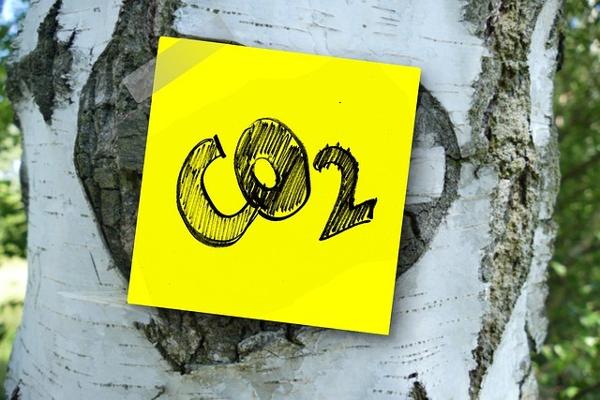Europe’s transition to a decarbonised energy system is underway. The 28 Member States of the EU have signed and ratified the Conference of the Parties (COP21) Paris agreement to keep global warming “well below 2 degrees Celsius above preindustrial levels, and to pursue efforts to limit the temperature increase even further to 1.5 degrees Celsius.”
Therefore, stakeholders must pursue all available options to limit energy-related CO2 emissions and, in order to achieve such energy transition in the EU, hydrogen will be required at large scale. Without it, the EU would miss its decarbonisation objective.
Hydrogen is an energy carrier, a fuel and a feedstock, which if produced adequately can reduce GHG emissions, strengthen energy independence and mitigate the challenges posed by variability and intermittency of renewable energy systems as it offers a clean, sustainable, and flexible option to convert renewable electricity into a chemical energy carrier for use in mobility, heat and industrial applications. As the “gaseous form of electricity”, it is an enabler for sectoral integration.
Hydrogen and hydrogen admixtures can be used as an alternative to natural gas for space heating, water heating and gas cooking. Hydrogen admixtures or hydrogen can be distributed via the existing gas grid, thus making use of the large available infrastructure asset. Because heat is by far the largest energy demand and has the greatest seasonal variation (disparity between high demand in winter, in times of low renewables generation, and high renewables generation in the summer), Power-to-Gas (P2G) can be applied to decarbonise European gas networks and ultimately store excess renewable energy produced in the summer for release in the winter. Therefore, P2G can make a major contribution to decarbonising the heating sector and decreasing our dependency on natural gas imports. The natural gas infrastructure is progressively decarbonising through the introduction, in the short-term, of biomethane and, hydrogen with low concentration admixture or as synthetic methane without requiring any changes to the infrastructure or gas appliances. Long-term objectives of full decarbonisation should therefore focus on enabling increasing shares of hydrogen, synthetic methane and biomethane with needed standardisations. In order to maximise efficiency in the energy system, combined heat & power (CHP) should be utilised.
In the Hydrogen Roadmap Europe[1], blending accounts for the first ramp-up of hydrogen in building heat with a blending ratio increasing to 7% by volume until 2030. An estimated 25 TWh of hydrogen could be blended into the natural gas network by 2030, representing about 1% of the energy demand for heating in commercial and residential buildings. By 2050, hydrogen could provide about 18% of the energy required by European households for heating. Hydrogen blending has been started in Germany, Dunkerque in France (hydrogen blending of up to 20% in the GRHYD demonstration project), and Keele in the UK (hydrogen blending of up to 20% in the HyDeploy project at Keele University in 2019). The H21 Leeds City Gate project plans to convert Leeds into a city that is 100% fueled with hydrogen until 2028. A first study on feasibility and economic value of converting the existing natural gas grid to 100% hydrogen was successful. The project starts in Leeds as one of the largest cities in the UK and is planned to be incrementally rolled out across the country. Projects using hydrogen produced from wind power and blended into the natural gas grid have started, e.g., in Germany or Denmark. First providers offer “windgas” for end customers at a premium to promote the development of power-to-gas technology. In addition, market development for CHPs is ongoing. Currently, there are more than 3,000 mCHPs deployed in Europe (it is worth nothing that Japan has now more than 200,000 mCHPs installed throughout the country). In Italy, Snam has officially launched its experiment of introducing a 5% hydrogen and natural gas blend into the Italian gas transmission network. The experiment, the first of its kind in Europe, is being conducted in Contursi Terme (Salerno, in Southern Italy), and involves the supply of H2NG (a blend of hydrogen and gas) to two industrial companies in the area: a pasta factory and a mineral water bottling company.
Because of the decarbonising solutions that hydrogen can deliver; a future gas market design should give a value for hydrogen in the gas grid. As for the electricity market design and the renewable energy directive recast, hydrogen is the missing link which should be appropriately introduced in any ensuing legislation on gas. Once more, it should reflect a level playing field with other renewable gases (e.g.: financial support for biogas). Support could be aligned with the type of support that renewable electricity has been enjoying for some year: Feed-In-Tariff, etc. where the main point is that a value is given to renewable and low-carbon hydrogen.
[1] Hydrogen Roadmap Europe – A Sustainable Pathway for the European Energy Transition, 2019.
Available here: https://www.fch.europa.eu/sites/default/files/Hydrogen%20Roadmap%20Europe_Report.pdf




















